02:15
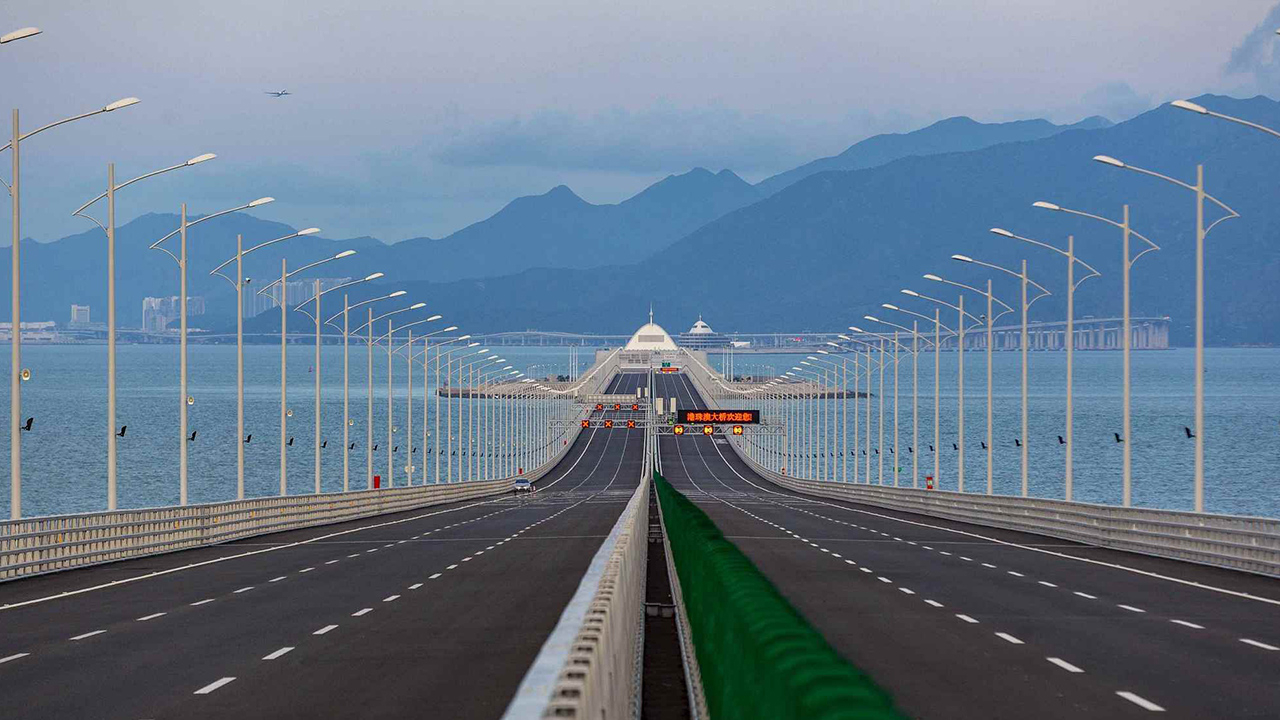
“The bridge makes the roads connected, then the connected roads become a bridge between people,” said 26-year-old Mok Chi Kuan, who is from Macao and is now living and working in Hong Kong with his wife.
The much-awaited Hong Kong-Zhuhai-Macao Bridge (HZMB) is slated to open to traffic on Wednesday after nine years of construction.
The mega bridge will cut down the travel time between these three places from three hours to 30 minutes, enhancing the weak transport links between the two special administrative regions (SAR) and cities in the western delta area.
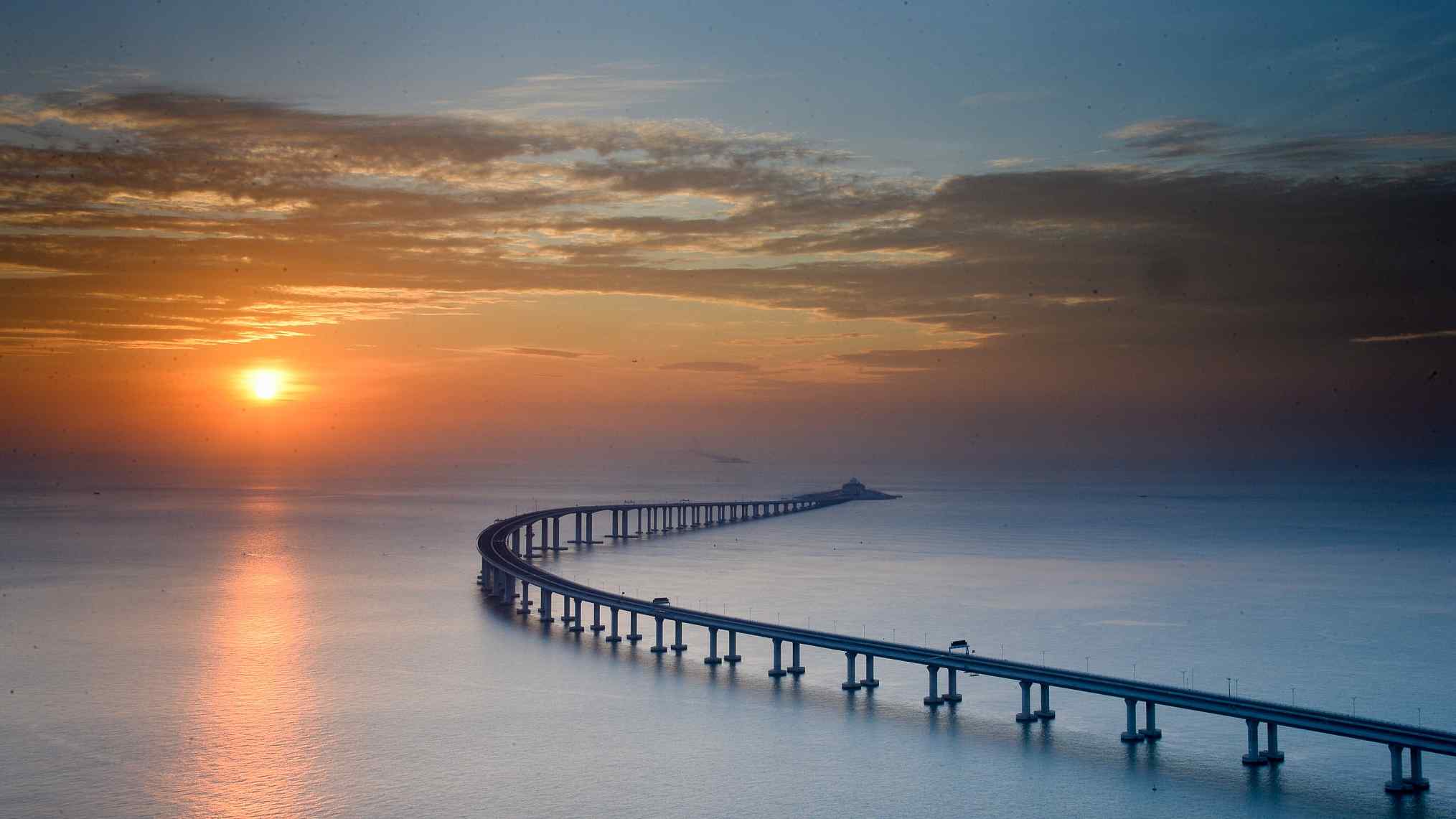
The Hong Kong-Zhuhai-Macao Bridge is open to traffic, October 24. /VCG Photo
The Hong Kong-Zhuhai-Macao Bridge is open to traffic, October 24. /VCG Photo
According to official local data, around 38,000 mainlanders went to Hong Kong for study or work in 2007, and the number increased to 57,000 in 2016.
Moreover, the total number of long-term residents in the Chinese mainland who are from Hong Kong also rose from 290,000 in 2004 to 500,000 in 2008.
“The integration in the region is a big trend,” said Echo Shang, a PhD student from the City University of Hong Kong. With increasingly closer ties between China's mainland and its two SARs, how will the HZMB change local life?

Mok Chi Kuan, who is from Macao and works at a financial institution in Hong Kong, said he and his wife often go back to Macao to visit their parents. /CGTN Photo
Mok Chi Kuan, who is from Macao and works at a financial institution in Hong Kong, said he and his wife often go back to Macao to visit their parents. /CGTN Photo
“I am really looking forward to the opening of the bridge, which can provide another convenient option of traveling,” Mok said, explaining that he and his wife often travel between these three places because their parents and relatives live in Macao, Guangzhou and Zhuhai.
“The bridge will slash driving time for us; we can arrive at any one of these cities within one hour,” said Yuki Wong, who has worked in Hong Kong's logistics industry for more than 20 years.
Wong said that the operation of the bridge will contribute greatly to consumption, employment and logistics in the region. “I hope the value of my house will be increased.”
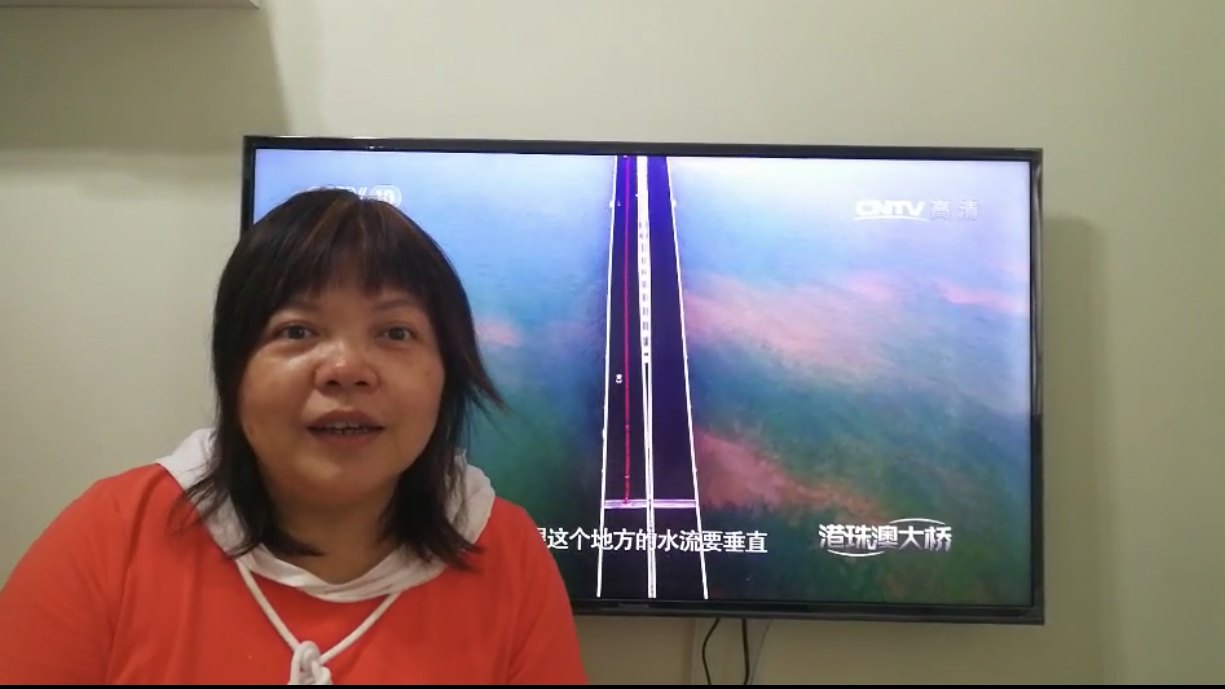
Yuki Wong from Hong Kong said she is really looking forward to the opening of the bridge. /CGTN Photo
Yuki Wong from Hong Kong said she is really looking forward to the opening of the bridge. /CGTN Photo
John Pang, a civil servant for the Hong Kong government, holds a similar idea, saying that the opening of the bridge can promote the interaction among residents in these three places. “For Hong Kong, it can stimulate local tourism and economy, bring more tourists and create more job opportunities.”
Although he doesn't need to visit the above places often, he said the bridge offers one more choice when visiting Macao and Zhuhai, especially for people commuting among the three cities.
“The bridge will make it easier for us to visit Hong Kong,” said Ms. Wang, a product manager in Zhuhai, “and maybe I can find a job in Hong Kong or Macao.”
At present, people usually take a ferry between Hong Kong and Macao, which takes an hour for a single trip with an economy class ticket costing 171 HK dollars.
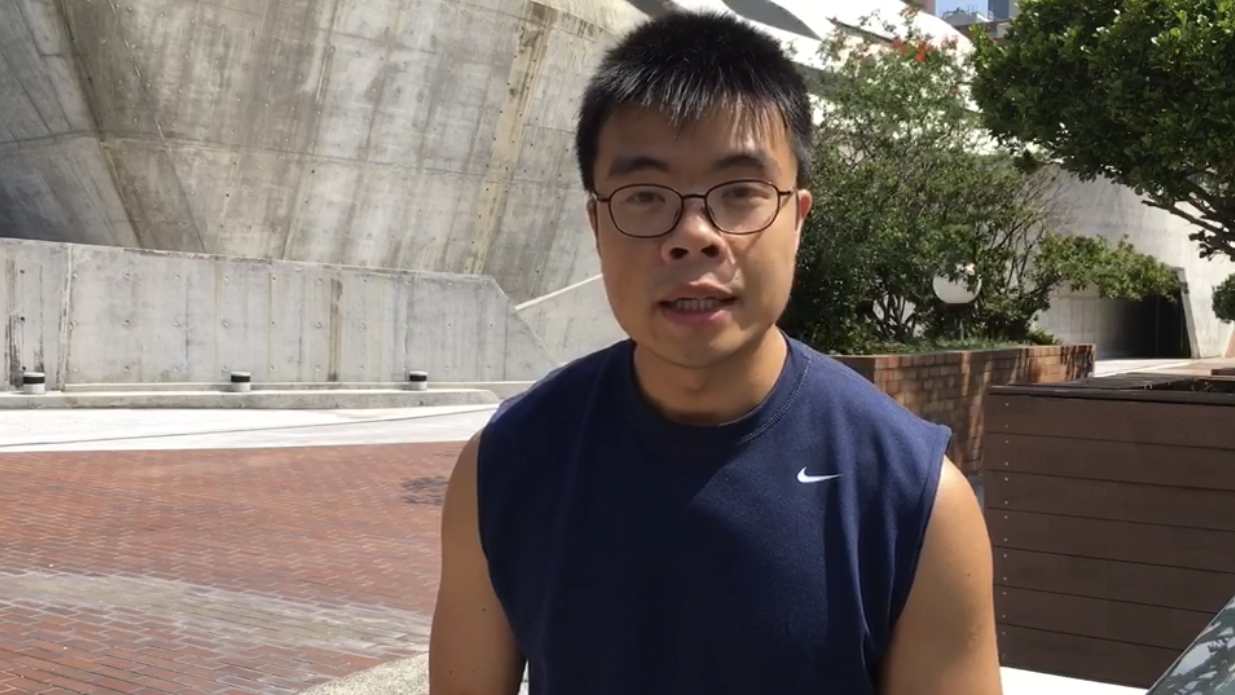
John Pang, a civil servant of the Hong Kong government, said the bridge will bring more tourists and create more job opportunities for the city. /CGTN Photo
John Pang, a civil servant of the Hong Kong government, said the bridge will bring more tourists and create more job opportunities for the city. /CGTN Photo
As for Zhuhai, whether by train or by road, people currently take a detour by traveling north to Shenzhen and then crossing the Humen Pearl River Bridge.
While the HZMB shortens the time of the journey, people talk about their concerns about the cost.
Mok said he hopes that tickets prices will be low for direct buses crossing the bridge and that there will be more pick-up points in the downtown of Hong Kong, as the only stop right now is in eastern Kowloon, costing 170 HK dollars for a day trip and 190 for a night trip.
It seems that the price is almost the same for the direct bus and the ferry. However, people can actually take a shuttle bus traveling across the ports between the two SARs. The price is much lower – 65 HK dollars for day trip and 70 HK dollars for night trip. But travelers need to use public transport to transfer to their downtown destinations.
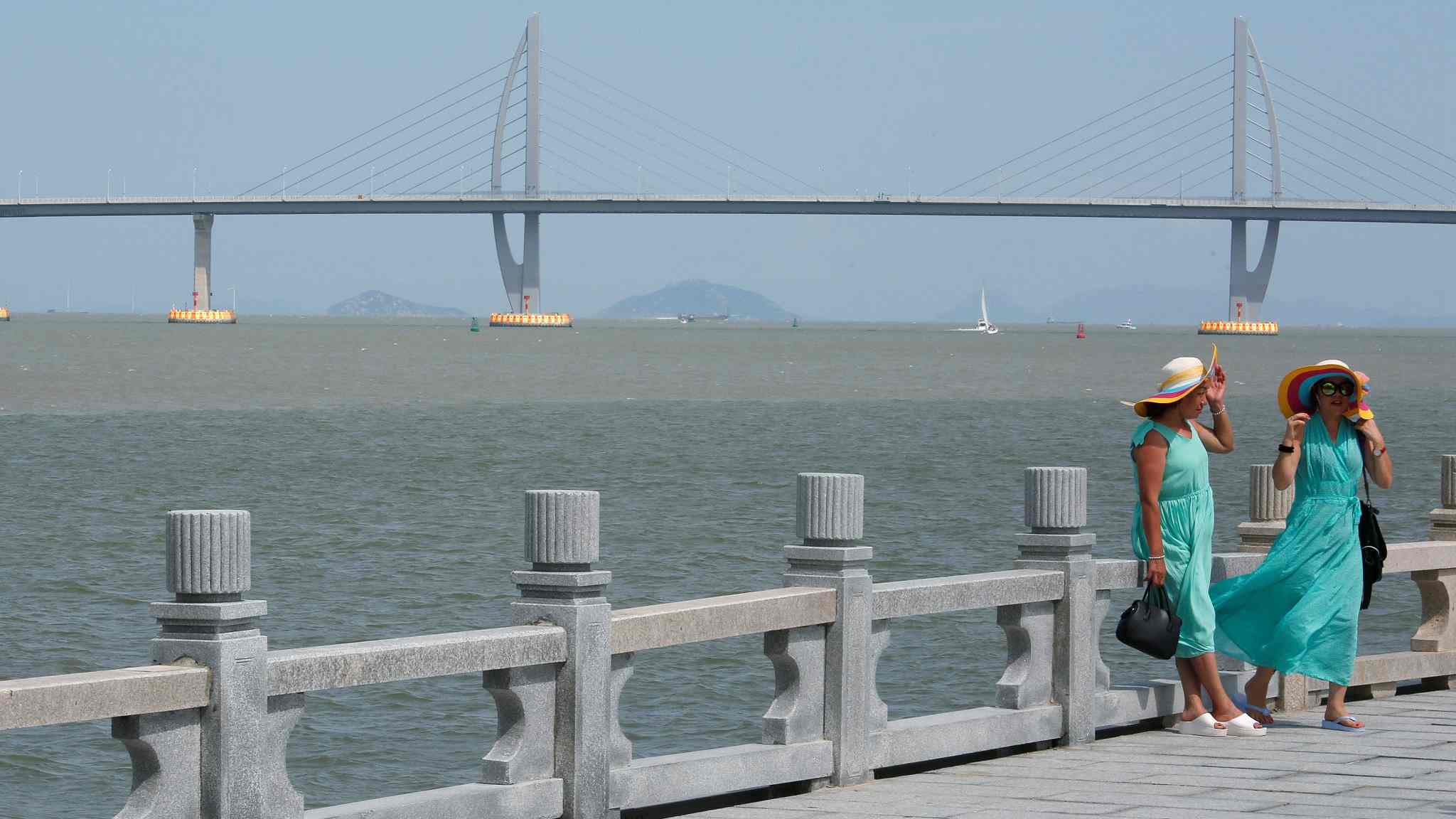
Visitors are taking photos with the Hong Kong-Zhuhai-Macao Bridge in Zhuhai, June 29, 2018. /VCG Photo
Visitors are taking photos with the Hong Kong-Zhuhai-Macao Bridge in Zhuhai, June 29, 2018. /VCG Photo
Some people say they may want to travel to Macao or Zhuhai more frequently in the future after the bridge is open.
Shang said it will be more convenient to visit Zhuhai because the journey will be shorter, adding that the bus will be more flexible while the ferry is easily affected by bad weather.
“The bus will be more stable, you don't need to worry about seasickness,” said Cao Jiaxin, a student from the Education University of Hong Kong, “It might be a preferred choice for me in the future.”
“The opening of the bridge may increase my frequency of visiting Macao and Zhuhai,” said Luo Yu, who is originally from the Chinese mainland and now works in a Hong Kong hospital after graduating.
“But the highway in northern Lantau Island may become more crowded as there are more vehicles using the bridge,” Luo said, adding that the time for her to go to the airport might be influenced.
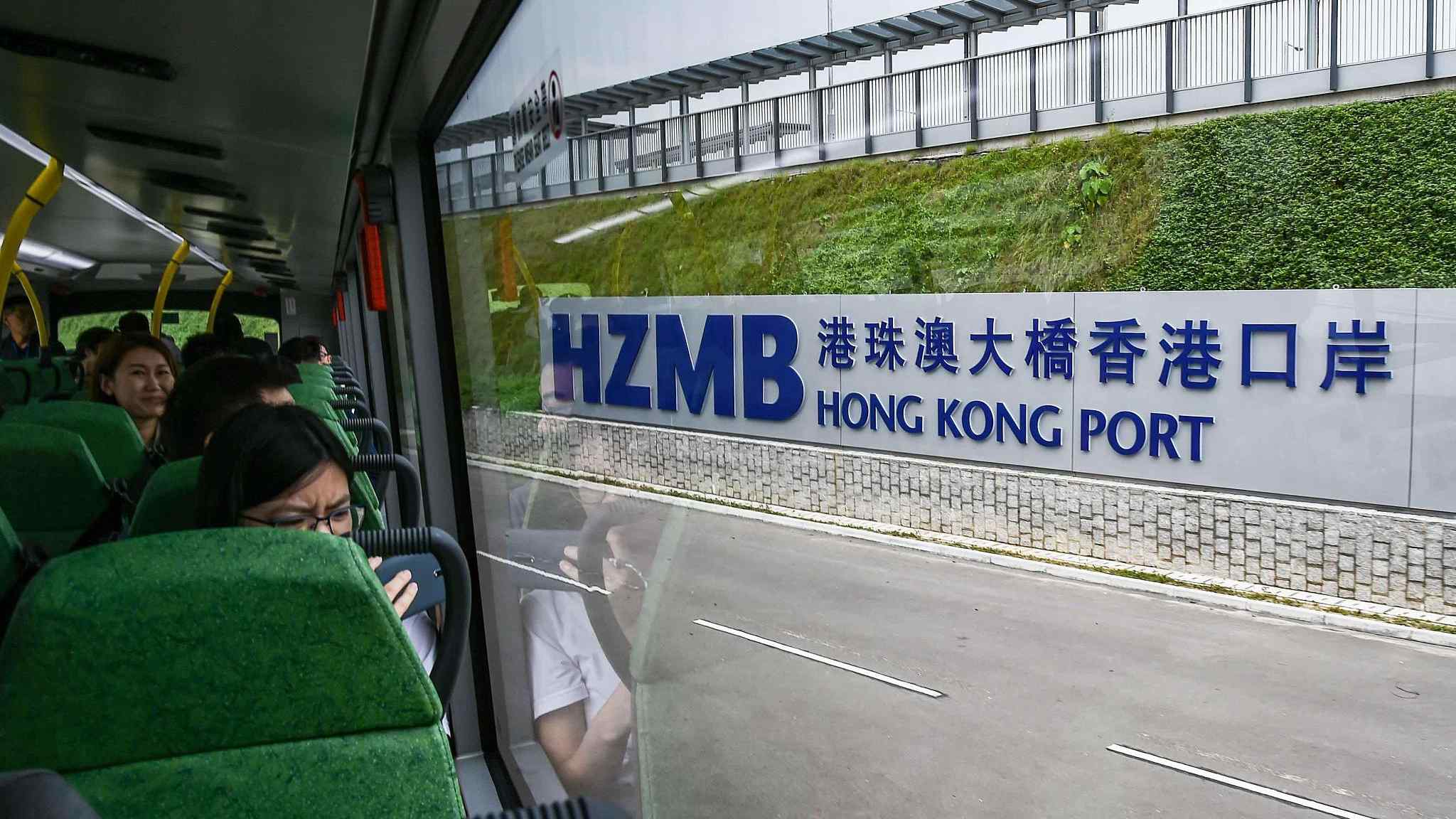
Journalists are taking a bus to visit the Hong Kong-Zhuhai-Macao Bridge, October 19, 2018. /VCG Photo
Journalists are taking a bus to visit the Hong Kong-Zhuhai-Macao Bridge, October 19, 2018. /VCG Photo
Besides positive expectations, there are also concerns about the traffic and the fees. However, most of them agree that the bridge can boost connectivity in the region.
“Many problems and conflicts in today's Hong Kong are caused by the lack of mutual understanding,” said Mok. “The bridge may provide more chances for them to communicate.”
Mok also mentioned that many enterprises in Hong Kong and Macao are cooperating with mainland companies as the development of mainland is booming. “The economy development and living standard can also be improved while the bridge will better integrate the whole region.”
(Video edited by Wang Kailin)
(Cover photo: The operation of the Hong Kong-Zhuhai-Macao Bridge is expected to boost the connectivity in the Pearl River Delta. /VCG Photo)








